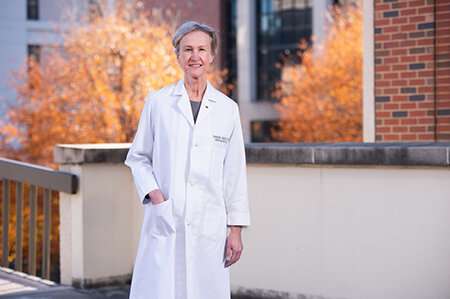New research assesses naturalistic driving techniques to link vision impairment and traffic accidents

New research published in JAMA Ophthalmology from the University of Alabama at Birmingham has used naturalistic driving techniques, or unobtrusive sensors and cameras in vehicles, to link vision impairment in older drivers to at-fault crashes and near-crashes as assessed by in-vehicle instrumentation.
The in-vehicle devices installed in each older driver's own vehicle consisted of five-channel video and sensors, such as accelerometers and GPS. Drivers drove over a period of six months with continual recording of their driving behavior. All crashes and near-crashes were confirmed by video.
Cynthia Owsley, Ph.D., professor and Nathan E. Miles Chair of Ophthalmology in the UAB Department of Ophthalmology and Visual Sciences, says accident reports used in the study of driver safety are frequently biased and incomplete, but naturalistic driving avoids this problem.
"Law enforcement typically comes to the scene of a collision after it has happened, so they do not actually see the crash," Owsley said. "What they have to do is try to figure out what happened from those who witnessed it—from the driver, other passengers, people in the other vehicle if there is another vehicle and also any witnesses, and these witnesses can have biases."
Owsley added that the use of in-vehicle instrumentation eliminates these biases.
"Witnesses can have different perspectives, meaning the driver may not feel they were responsible, but other witnesses may disagree," she said. "The police officer then has to piece it together and makes notations on the accident report as to what they think happened, including whether a driver is at fault. Police officers can also have their own biases. Some may not want to blame an older adult driver, whereas others may hold older adults largely responsible due to stereotyping."
Data for this study was gathered from the Alabama VIP Older Driver Study largely funded by the National Eye Institute.
According to Owsley, what is especially unique about naturalistic driving research compared to other older-driver techniques using accident reports is it can identify near-crashes.
"Near-crashes occur more commonly than crashes and have underlying causes similar to those of actual crashes," she said. "They approximately double the number of adverse outcomes within our study over six months. A near-crash is defined as any circumstance that required a rapid evasive maneuver by the participant's vehicle or any other vehicle, pedestrian, cyclist or animals to avoid a crash."
The key characteristic of a near-crash is the "last-second" evasive maneuver by the driver.
"I was amazed that we were able to find the association of actual recorded crashes and at-fault through video and vehicle sensory data to their visual capabilities," Owsley said. "Studies like VIP involve a great deal of cooperation from older driver participants, since the recording devices are physically mounted in their own vehicles. Using these naturalistic driving techniques in the VIP study, we confirmed that contrast sensitivity impairment, slowed visual processing speed and deficits in motion perception elevated crash and near-crash risk in older drivers."
More information: Thomas A. Swain et al. Naturalistic Driving Techniques and Association of Visual Risk Factors With At-Fault Crashes and Near Crashes by Older Drivers With Vision Impairment, JAMA Ophthalmology (2021). DOI: 10.1001/jamaophthalmol.2021.0862



















